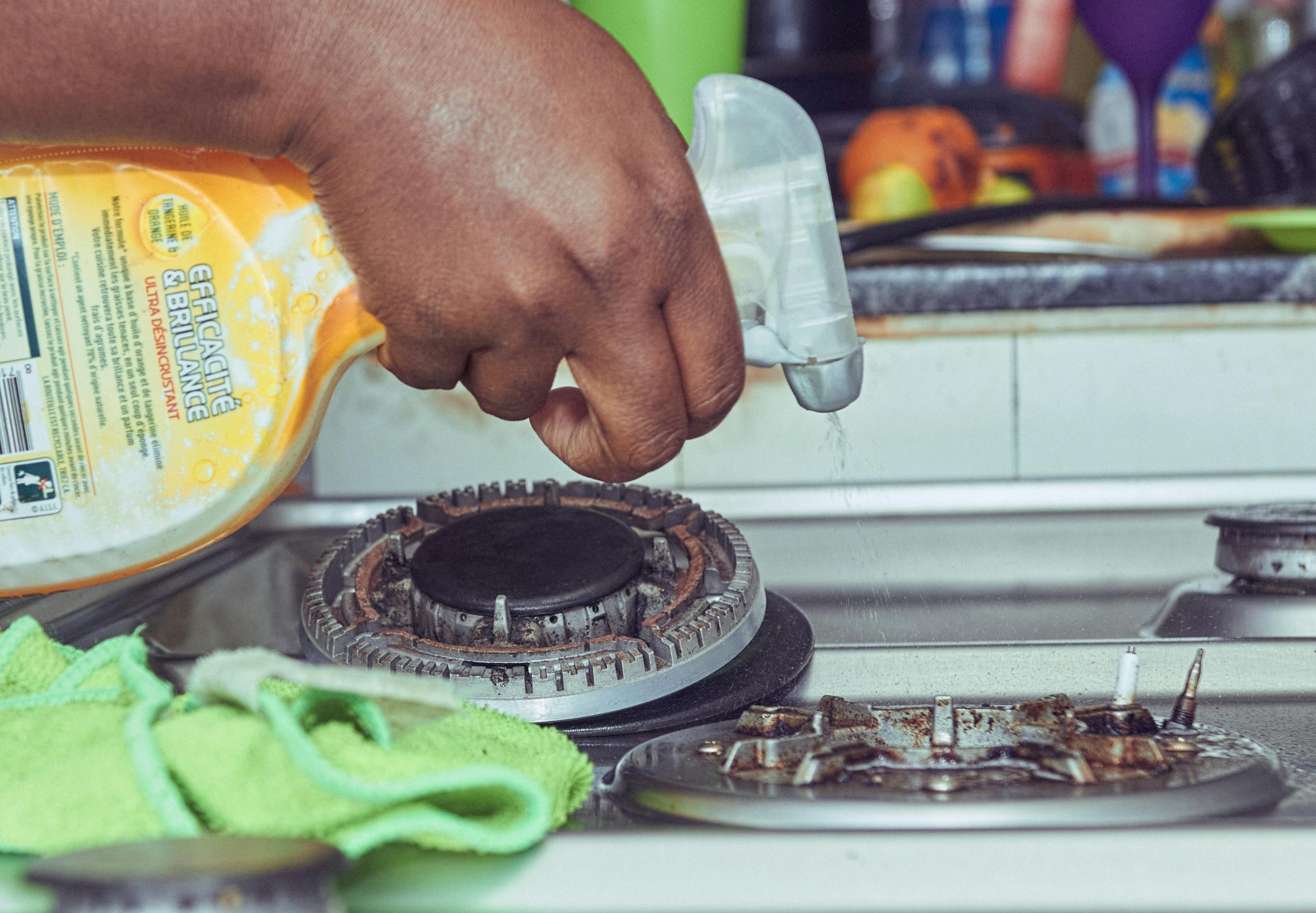A deep clean is more than just tidying up—it is a thorough, top-to-bottom approach that removes hidden dirt, grime, allergens, and bacteria that regular cleaning often misses. While sweeping, dusting, or vacuuming can maintain a home temporarily, a deep cleaning session ensures a healthier, fresher, and more organized living space. Whether preparing for guests, spring cleaning, or tackling long-neglected areas, a detailed deep cleaning checklist can make the process more efficient and less overwhelming.
Deep cleaning improves indoor air quality, prolongs the life of your home’s surfaces, and makes living spaces more comfortable. It can also prevent costly repairs by keeping appliances, flooring, and fixtures in good condition. To achieve the best results, organizing your tools, creating a plan, and following a room-by-room approach is key.
Why Deep Cleaning Matters

Every home accumulates hidden dirt over time. Dust settles on top of cabinets, grime builds up in the kitchen, and mold can develop in damp areas like bathrooms. Deep cleaning addresses these issues by targeting:
- Allergens and Dust: Hidden particles can trigger allergies and worsen respiratory issues.
- Bacteria and Germs: High-touch areas, kitchens, and bathrooms are prime breeding grounds.
- Odors: Cleaning deep areas removes trapped odors from carpets, furniture, and ventilation systems.
- Home Aesthetics: Deep cleaning restores shine to floors, furniture, and walls, making spaces look new.
Without occasional deep cleaning, these problems accumulate, making regular maintenance much more challenging.
Essential Tools and Supplies
Before starting a deep clean, gather your tools and cleaning supplies. Being prepared reduces interruptions and makes the process faster. Essential items include:
- Microfiber cloths and sponges for dusting and scrubbing
- Scrubbing brushes of different sizes for grout, tiles, and tight spots
- Mop, bucket, and vacuum cleaner with attachments
- Broom and dustpan
- Rubber gloves for protection
- Multi-surface and disinfectant cleaners
- Glass cleaner for mirrors and windows
- Baking soda and vinegar for natural cleaning
- Carpet cleaner or steam cleaner for deep carpet maintenance
- Trash bags for decluttering
Having everything ready ensures a smoother workflow and prevents unnecessary trips to the store mid-cleaning.
General Deep Cleaning Tips
Deep cleaning is most efficient when done methodically. Some key strategies include:
- Work from Top to Bottom: Start with ceilings, light fixtures, and walls before moving to furniture, floors, and baseboards. This prevents dust and debris from falling onto already-cleaned surfaces.
- Declutter First: Removing items like toys, magazines, or miscellaneous décor allows you to reach surfaces fully.
- Microfiber Over Rags: Microfiber traps dust and allergens better than cotton rags.
- Ventilate the Space: Open windows or use fans to avoid inhaling dust or cleaning fumes.
- Break It into Sessions: Large homes may require multiple days to deep clean effectively, preventing fatigue and oversight.
Deep Cleaning Checklist by Room
Kitchen
The kitchen is a high-traffic, high-grease area. Deep cleaning targets appliances, surfaces, and hidden corners:
Appliances:
- Clean inside and outside of the oven and microwave
- Wipe down refrigerator shelves, drawers, and seals
- Run dishwasher cleaning cycles or wipe interior and racks
- Sanitize small appliances like coffee makers or toasters
Surfaces:
- Disinfect countertops, backsplash, and sinks
- Wipe cabinet fronts, handles, and hardware
- Clean faucets and drain areas to remove buildup
Floors:
- Sweep and mop thoroughly, paying attention to corners
- Remove mats and clean underneath
Extras:
- Organize pantry shelves and discard expired items
- Sanitize trash and recycling bins
Living Room
The living room accumulates dust, pet hair, and debris due to frequent use.
Furniture and Decor:
- Vacuum upholstered furniture and cushions; rotate cushions
- Dust and polish wooden furniture and shelves
- Clean under sofas, chairs, and decorative items
- Wash or vacuum curtains and drapes
Electronics:
- Wipe TV screens, remotes, and gaming consoles
- Dust light fixtures and picture frames
Floors:
- Vacuum carpets and rugs; steam clean if needed
- Sweep and mop hardwood or tile flooring
Bedroom
A clean bedroom contributes to restful sleep and overall health.
Bedding:
- Wash sheets, pillowcases, and blankets
- Vacuum and rotate the mattress; consider a mattress protector
- Clean pillows and comforters where possible
Furniture and Surfaces:
- Dust dressers, nightstands, and lamps
- Organize closets and drawers
- Clean mirrors and windows
Floors:
- Vacuum under the bed and behind furniture
- Mop hard surfaces and steam clean carpets
Bathroom
Bathrooms are prone to mold, mildew, and bacteria.
Fixtures and Surfaces:
- Scrub sinks, faucets, and countertops
- Clean toilets inside and out, including the base and behind
- Wipe mirrors, light fixtures, and cabinet fronts
- Clean shower walls, doors, and grout
Extras:
- Remove and wash bath mats and shower curtains
- Check for mold and mildew; use appropriate cleaners
- Empty and disinfect trash cans
Laundry Room
This area often collects lint, detergent residue, and dust.
Machines:
- Wipe washing machine drum, exterior, and detergent dispensers
- Clean dryer lint trap and vacuum behind machines
- Inspect hoses and connections for leaks
Surfaces and Floors:
- Wipe counters and shelves
- Sweep and mop the floor, removing debris
Entryways and Hallways
These high-traffic areas show dirt quickly.
- Sweep and mop floors; use washable high-traffic rugs
- Dust light fixtures, baseboards, and door frames
- Wipe and polish doors and handles
- Organize shoes, coats, and storage areas
Air Quality and HVAC
Maintaining air quality improves health and reduces allergens:
- Replace HVAC or AC filters
- Dust ceiling fans and vents
- Consider an air purifier for additional filtration
Deep Cleaning Maintenance Tips

Maintaining a clean home is easier when deep cleaning is paired with regular upkeep. Instead of reserving all cleaning for occasional marathon sessions, breaking tasks into daily, weekly, monthly, and quarterly routines keeps your home fresh, organized, and manageable. Regular maintenance prevents dirt buildup, reduces allergens, and prolongs the life of surfaces and appliances.
Daily Quick Clean
A few minutes each day can prevent messes from piling up:
- Wipe High-Touch Surfaces: Clean door handles, light switches, countertops, and kitchen tables to reduce germs.
- Tidy Clutter: Return items to their proper places, such as shoes, toys, or mail.
- Spot Clean Spills: Attend to spills or stains immediately to prevent staining or sticky residues.
- Quick Sweep or Vacuum: In high-traffic areas, a short sweep or vacuum keeps floors presentable.
Weekly Cleaning
Devoting time once a week ensures deeper areas are maintained:
- Vacuum and Mop Floors: Remove dust, hair, and debris from carpets, rugs, and hard floors.
- Dust Surfaces: Wipe shelves, furniture, baseboards, and ceiling fans to prevent buildup.
- Bathroom Cleaning: Scrub sinks, tubs, toilets, and mirrors to maintain hygiene.
- Kitchen Maintenance: Wipe down appliances, countertops, and cabinet fronts; sanitize trash bins.
Monthly Tasks
Once a month, target areas that aren’t part of the weekly routine:
- Deep Clean Appliances: Remove buildup in ovens, microwaves, refrigerators, and dishwashers.
- Window Care: Wash windows and window sills to improve natural light and reduce dust accumulation.
- Furniture and Upholstery: Vacuum or wipe furniture, and rotate or flip cushions if possible.
- Organize Storage Spaces: Check pantry, closets, and cabinets for expired items or unnecessary clutter.
Quarterly Tasks
Every three months, focus on tasks that require more effort but improve overall home longevity:
- Steam Clean Carpets and Rugs: Remove deep-seated dirt and allergens.
- Wash Curtains and Blinds: Freshen up fabrics and remove dust or pollen.
- Declutter Storage Areas: Clean out basements, garages, and storage closets to maintain order.
- Inspect for Repairs: Check plumbing, HVAC filters, and appliances for maintenance needs.
Additional Tips for Success
- Use a Calendar or Checklist: Track tasks and create reminders to stay consistent.
- Rotate Tasks: Alternate focus areas to avoid burnout and ensure no space is neglected.
- Involve the Household: Assign family members or roommates specific tasks to share the workload.
- Keep Supplies Handy: Store cleaning tools and products in multiple areas for easy access.
By breaking cleaning into manageable steps and spreading tasks throughout the week and month, deep cleaning becomes less daunting. You maintain a healthier, more organized home while avoiding exhausting all-day cleaning marathons. Over time, this consistent approach reduces the frequency of intensive deep cleaning sessions, making your home easier to maintain year-round.
Safety Tips for Deep Cleaning
Deep cleaning is essential for a healthy, organized home, but it often involves strong chemicals, sharp tools, and physically demanding tasks. Prioritizing safety helps prevent injuries, accidents, or harmful exposure to fumes. Here’s how to stay safe while deep cleaning:
Use Personal Protective Equipment (PPE)
- Gloves: Always wear chemical-resistant gloves when handling cleaners or scrubbing surfaces to protect skin from irritation.
- Masks or Respirators: Use a mask when working with strong chemicals, sprays, or dusty areas to avoid inhaling harmful particles.
- Protective Eyewear: Eye protection prevents splashes from cleaners, especially when using bleach, ammonia, or oven degreasers.
Handle Cleaning Chemicals Safely
- Read Labels: Follow manufacturer instructions for proper usage, dilution, and storage.
- Avoid Mixing Products: Never combine bleach with ammonia, vinegar, or other chemicals, as toxic gases can form.
- Store Properly: Keep all cleaners out of reach of children and pets, ideally in a locked cabinet.
- Use Ventilation: Open windows or use fans when cleaning with strong chemicals to reduce fumes.
Use Tools and Equipment Correctly
- Ladders and Step Stools: Ensure they are stable and placed on flat surfaces. Avoid overreaching; move the ladder instead.
- Vacuum and Electrical Safety: Unplug equipment before cleaning filters or attachments. Avoid running cords through wet areas.
- Proper Lifting Techniques: Bend knees, not the back, when moving heavy furniture or appliances.
Plan for Physical Safety
- Take Breaks: Deep cleaning can be physically demanding; rest periodically to avoid strain.
- Stay Hydrated: Drink water, especially when cleaning large areas or using heat-producing tools.
- Dress Appropriately: Wear comfortable clothing that protects your skin and allows movement.
Additional Tips
- First Aid Ready: Keep a basic first aid kit nearby in case of minor cuts or burns.
- Dispose of Chemicals Properly: Follow local regulations for hazardous waste disposal, especially for old or expired products.
- Work in Sections: Avoid overexertion by cleaning one area at a time, reducing risk of accidents.
By following these safety tips, deep cleaning can be effective without compromising your well-being. Protecting yourself ensures a cleaner home and a safer experience, allowing you to complete tasks efficiently and confidently.
Final Thoughts
A comprehensive deep cleaning checklist ensures every room and surface is addressed. By working systematically and maintaining a routine, you can keep your home clean, organized, and healthy year-round. Deep cleaning protects your family’s health, preserves home surfaces, and creates a comfortable, welcoming living environment. With proper planning, tools, and time management, deep cleaning can be efficient, thorough, and even satisfying.

